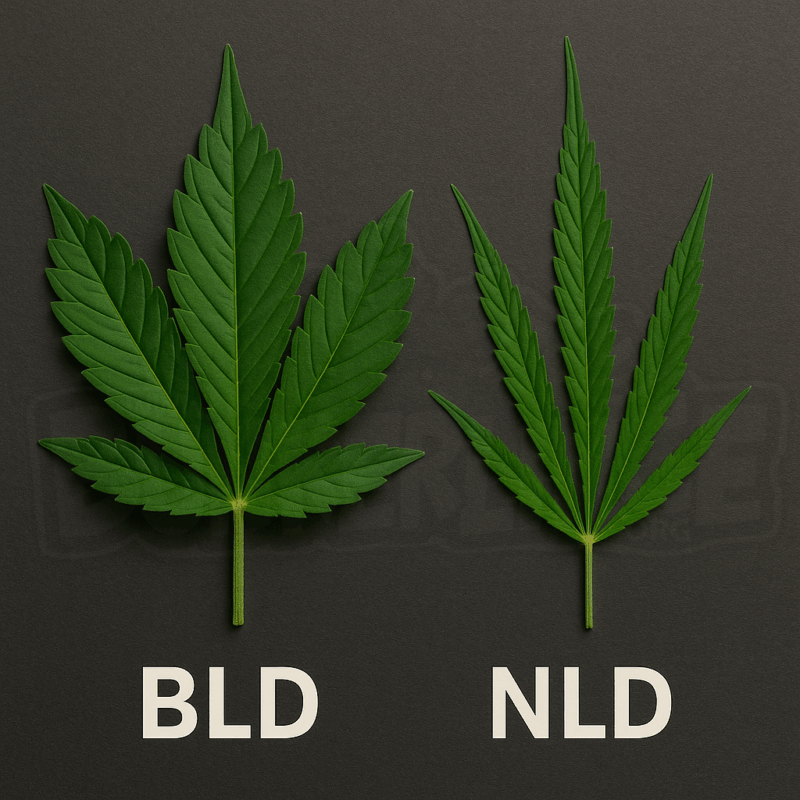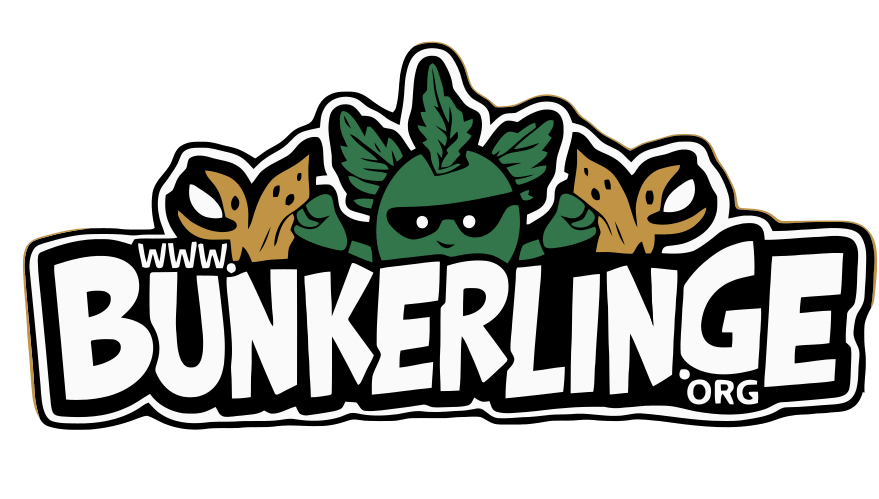Introduction
In the world of cannabis cultivation and strain classification, the abbreviations BLD and NLD keep cropping up. But what is behind these terms and why are they important for growers, consumers and doctors? In this article, you will learn everything you need to know about the differences between BLD (Broad Leaf Drug) and NLD (Narrow Leaf Drug) cannabis types, their botanical properties, origin, cultivation requirements and effect profiles. We draw on well-founded scientific sources and proven specialist literature.
What do BLD and NLD mean?
The terms BLD (Broad Leaf Drug) and NLD (Narrow Leaf Drug) refer to two main forms of cannabis plants that differ primarily in their leaf shape, growth structure, origin and chemical composition. Colloquially, BLD corresponds to the classic indica type, while NLD is assigned to the so-called sativa type.

Botanical characteristics
BLD (Broad Leaf Drug):
- Broad leaves, often with 5 to 9 broad “fingers”
- Compact, bushy growth
- Dense, resinous flowers
- Dark green coloration
NLD (Narrow Leaf Drug):
- Narrow, long leaves, up to 13 “fingers”
- Tall, widely branched growth
- Airy, elongated flowers
- Often light green in color
This distinction is not only visually relevant, but also decisive for cultivation: while BLD types usually ripen earlier and are well suited to indoor cultivation, NLD types require more space, time and a stable tropical climate.
Genetic origin and evolution
The genetic origins of both types can be traced back to different regions:
- BLD types (Indica) originate from Central Asia (mainly Afghanistan, Pakistan, Hindu Kush). They are adapted to a continental climate with short summers.
- NLD types (Sativa) developed in tropical and subtropical regions such as Southeast Asia, Africa and Central America.
Both lines belong to the botanical species Cannabis sativa, but are further subdivided in the specialist literature:
- C. sativa subsp. indica var. afghanica (BLD)
- C. sativa subsp. indica var. indica (NLD)
Source: McPartland, J. M., & Small, E. (2020). Cannabis: Evolution and Ethnobotany. University of California Press.
Chemical composition and effect
The chemical profiles of BLD and NLD types also differ:
- BLD plants often contain balanced amounts of THC and CBD. They have a physically relaxing, pain-relieving and sedating effect.
- NLD plants are mostly THC-dominant and are characterized by a stimulating, cerebral effect.
However, these effect profiles are not absolute. Modern breeding has produced many hybrids that combine both characteristics.
Source: ElSohly, M. A. (Ed.). (2017). Marijuana and the Cannabinoids. Humana Press.
Typical representatives
- BLD (Indica): Afghan Kush, Hindu Kush, Mazar-i-Sharif
- NLD (Sativa): Thai, Durban Poison, Acapulco Gold, Malawi Gold
These varieties are considered classic landraces, on which many modern hybrids are based.
Source: Clarke, R. C., & Merlin, M. D. (2013). Cannabis: Evolution and Ethnobotany. University of California Press.
Cultivation differences
| Feature | BLD (Indica) | NLD (Sativa) |
|---|---|---|
| Growth height | 1-2 m | 2-5 m |
| Flowering time | 7-9 weeks | 10-16 weeks |
| Climate requirement | Cool, dry climate | Tropical and humid climate |
| Yield | Early and compact | Late, but potentially higher |
Conclusion: Why BLD and NLD are relevant for cannabis choice
The distinction between BLD and NLD is a well-founded and scientifically based categorization that goes far beyond the popular indica-sativa classification. It helps growers, breeders and consumers to better understand the properties of a variety and to use them in a targeted manner – whether for medicinal purposes, enjoyment or efficient cultivation. Thanks to the clear separation according to morphological and chemical criteria, varieties can be selected and combined more consciously.
Sources and literature
- McPartland, J. M., & Small, E. (2020). Cannabis: Evolution and Ethnobotany. University of California Press.
- ElSohly, M. A. (2017). Marijuana and the Cannabinoids. Humana Press.
- Clarke, R. C., & Merlin, M. D. (2013). Cannabis: Evolution and Ethnobotany. University of California Press.
- Small, E. (2016). Cannabis: A Complete Guide. CRC Press.
